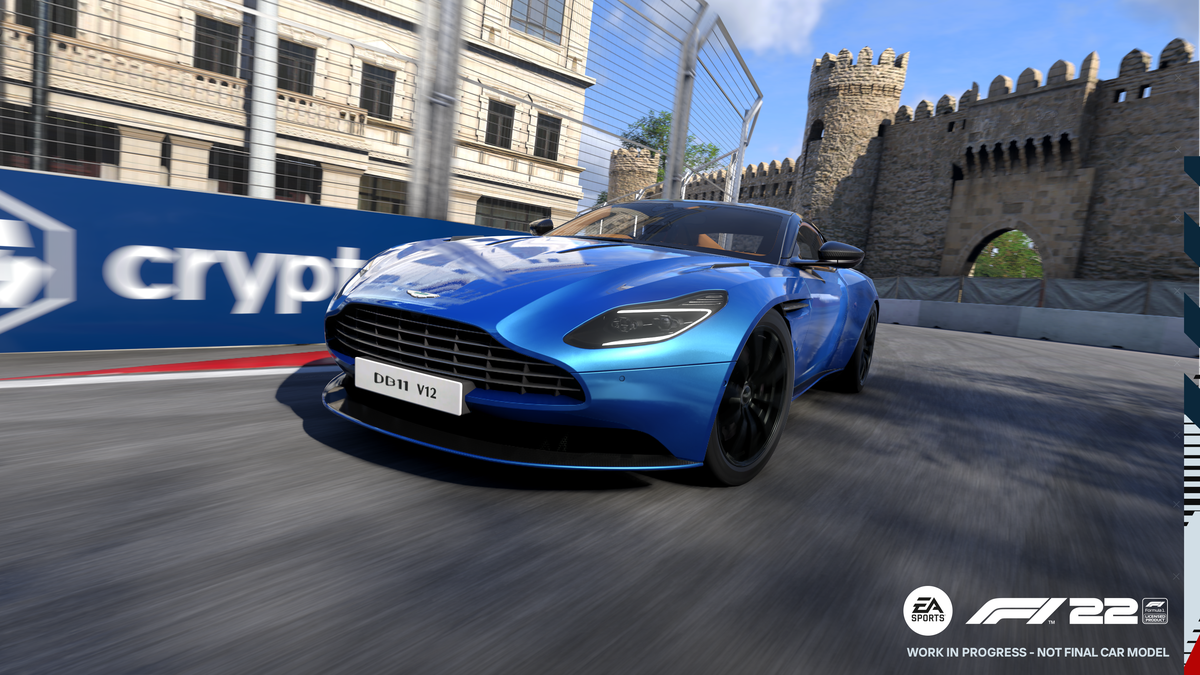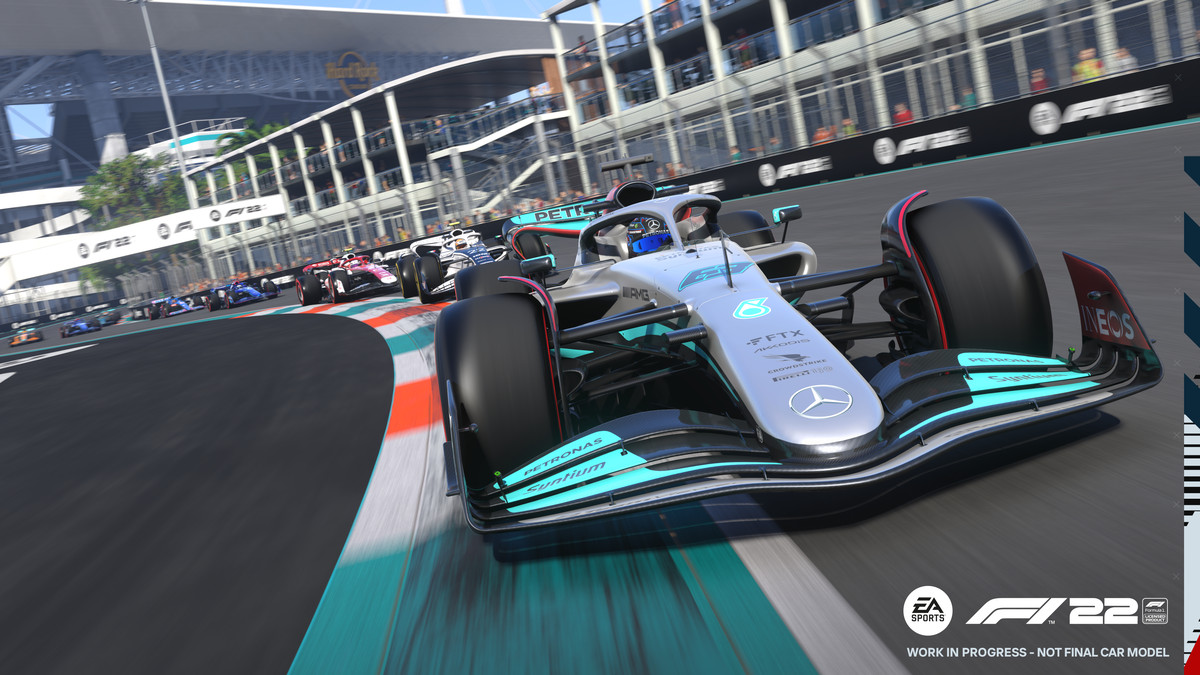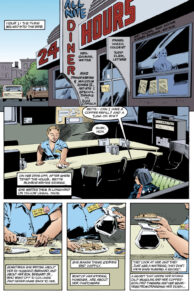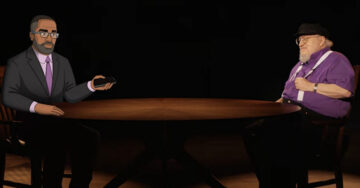Eventually, it just worked.
The engine didn’t change. The torque through the rear axle didn’t change. The clutch pedal, tighter than an eight-day clock, sure didn’t change. I don’t feel like I changed, either. But in the spring of 1990 I finally figured out how to operate my mother’s manual transmission BMW 325e. I went from being unable to get the thing to move without stalling out to cruising around Kiawah Island with my brother, no questions asked.
The same sort of experience awaits you in F1 22, even if — maybe especially if — you’re a series veteran with thousands of miles in track time. The new cars, as is the case in the real-life vehicles they emulate, have an unavoidable learning curve, and the AI drivers are much stronger, especially as they aren’t the ones learning on the job. When I reviewed F1 22 two weeks ago, I felt there was no avoiding the traction control assist for gamepad users. My car was spinning out on the slightest acceleration using the same control-and-assist regime as last year’s game.
Well, lo and behold, just like that spring in South Carolina, something finally clicked for me; I can race F1 22’s sleek new models on a gamepad without traction control after all, which means I can run faster and tick the AI difficulty up four or five spots. Lee Mather, Codemasters’ creative director, said I am not the only one making these breakthroughs.
“Something which we very commonly see is, there’s a placebo effect, when we put a patch out, people think we’ve changed things that we’ve gone nowhere near,” Mather said. “We’ve already seen feedback from the patch that’s gone live [on July 7], relating to things that we’ve not been anywhere near.”
In simpler terms, two weeks into F1 22’s launch, folks are starting to get it, and aren’t giving themselves enough credit for getting it. Codemasters does plan to rebalance the cars’ torque and throttle behavior — but not until the next patch. And it doesn’t sound like it’s a huge overhaul, either. “There’s a few things that we’d identified ourselves that we wanted to make some small adjustments to,” Mather said.
Drivers in the game’s always restive subreddit may be happy to hear that — or disappointed that the changes are small — but if the message from Mather is that Codemasters believes in the authenticity and playability of what it has launched, then its fans should believe they’re capable of playing it. They just need some acclimatization.
Players shouldn’t be afraid to turn on assists such as traction control, or braking — especially when they’re learning how to take a standing start. But they also need to pay attention to the cars’ behavior, and be willing to adjust their controller’s calibration, particularly if they are playing on a gamepad, as most F1 22 players do.
“People get into a strange mindset of, ‘I shouldn’t use assists, I should be good enough to beat this,’ But that’s not always the case,” Mather said. “The assists are there to make the game a pleasurable experience. You should never be afraid to make use of the tools that may give the player the experience that they want from the game. […] Don’t force yourself to try and learn to play in a certain way when the tools are there to, actually, make the game play how you want to.”
Gamepad players should also consider tinkering with the throttle and brake linearity on their inputs, which is found in the settings menu, under the Controls, Vibration, and Force Feedback tile in the Calibration selection. It might sound like you’re messing with under-the-hood stuff that could break the game, but you’re not. A lower linearity setting on the throttle, brakes, and steering give you more granular control at the beginning of those movements. You don’t need an advanced controller, like the Xbox Elite Series 2, either.
I drove with a 40 throttle linearity last year; it’s down to 23 this year. That may sound counter-intuitive, as a higher throttle linearity makes the trigger less sensitive on its initial press than it is at the end. But I’ve found that it helps feather my acceleration and move more smoothly to full throttle.
If you had an advanced controller, and you were putting dead zones in to control the throttle on your initial acceleration, take them out. You need that extra room to make a smooth exit from the corner.
“I think we ran a race earlier [last] week,” Mather said, “It was a created race where we had content creators from the F1 world racing against content creators from the FIFA world,” Mather said. “The final was actually a really good mix of FIFA and F1 players. I think that instantly showed that the changes to the handling are producing really fantastic racing. A lot of the content creators from the F1 world played on full rigs with pedals and wheels, and some of the FIFA guys […] chose to play on a gamepad. And the two were still brilliant; it was very competitive.”
Other than the new cars’ handling and learning curve, the other howls of protest rising from veteran F1 players in the game’s first week concerns the pace of the AI drivers, especially relative to the created car that players get and build up through the popular My Team career. Mather says the bot cars are indeed quicker this year. As always, F1 22’s AI governs raw pace (with AI increments of 1 accounting for a difference between 0.15 and 0.2 seconds in track time) as much as aggression and how much room bot drivers leave others.
So if you’re getting mowed down on the long straights at Spain, or Baku, for heaven’s sake back the difficulty down. I raced at 97 AI in Spain in F1 2021; I’m at 84 this year. Mather said the faster-paced AI is there because “it gives us more ceiling for players who are those ‘aliens’ who race at a really high difficulty level.”
For a greater understanding of the new AI and the raw pace they have, genius Reddit user phail216 posted this indispensable matrix, which shows the pole-winning times, track-by-track, at every AI setting from 1 to 110. Basically, run several laps in F1 22’s Time Trial mode at a particular track, pick your best lap (or the average, or the median, whatever you feel most represents your qualifying performance) and compare it to the chart. There’s your AI setting. It appears to be modeled on data from F1Laps.com, which is a community site with premium options — but most of its useful information, including setups and track AI calibration, is available for free.

New features in F1 22, which seem to be there for more casually interested fans brought in by the sport’s surging popularity, are still helpful to advanced drivers. The Supercars have taken a lot of stick from longtime fans, for example, many of whom wish the series instead brought back classic F1 vehicles from years past. But the slower and heavier street-legal cars, in a Time Trial lap, helped familiarize me with Miami, Portugal, and Saudi Arabia, the three tracks I’ve driven the least. Mather said developers were aware early on that Supercars — which are unlocked in gameplay, and not as microtransactions — had a tutorial use.
“I think that’s something we’ve always struggled with in Formula One, is that you’re literally thrown into the fastest cars in the world, on very difficult circuits,” Mather said. He pulled out an example involving Milestone’s MotoGP racing simulation that matched my experience completely: “I don’t play bike racing games very often, and when I do, I arrive at the corner at such a speed that I’ve tipped in at the wrong point, and I go straight off,” Mather said. “Whereas, if I was able to learn it at a slightly slower pace, I would understand that.
“So if you start driving a Supercar first, you realize the braking distances are massive,” he continued, “so by the time you reach that track in a Formula One car, you might be braking way too early — but that’s better than braking way too late. The whole point of the Supercars, outside of the challenges and other exciting things you do with them, is that they give players a great learning opportunity.”
“Something we’ve always wanted to get across to players is just how much more advanced than pretty much any other form of motorsport a Formula One car is,” Mather said. “When you put it against the really, really fast road cars we’ve got in the game, when you see their differences, it really highlights what a Formula One car is capable of.”












